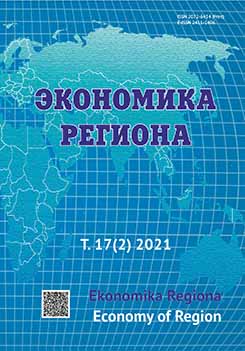Эконометрическая оценка стратегических факторов развития приграничных регионов России
Econometric Estimation of Strategic Development Factors of Russian Border Regions
Author(s): Svetlana Victorovna Doroshenko, Ksenia PosysoevaSubject(s): Economy
Published by: Институт экономики Уральского отделения Российской академии наук
Keywords: border regions; old borderlands; new borderlands; factors; socio-economic development strategies; transport infrastructure; tourism; small business; foreign trade; ecology; models
Summary/Abstract: Cross-border development is significantly influenced by global events, such as 1990s transformations, when different inland areas across the world became borderlands. Further, due to 2014 geopolitical changes, the Russian Federation had to establish a new institutional framework regulating the border regional development. The research aims to assess the impact of strategic factors on socio-economic development of these regions. For that purpose, we analysed 47 of 50 Russian border entities divided into two groups of old and new (established after the collapse of the USSR in 1991) border regions. We hypothesise that the factors considered as strategic in these territories manifest differently in old and new border regions. Empirical data, obtained from the Federal State Statistics Service and Unified Interdepartmental Statistical Information System, cover the period from 2000 to 2018. The simulation was conducted using the statistical package Stata 14. We analysed five groups of factors (transport infrastructure, small business, foreign trade, tourism, ecology) as well as corresponding indicators. Gross regional product per capita in comparable prices of 2018 was considered as a dependent variable. Then, we assessed three models explaining the impact of the examined factors on old and new border regions individually and in combination. For each model, pooled regression, as well as random and fixed effects models were constructed. Conducted simulations revealed that the fixed effects models best describe the analysed data. The research results confirmed the hypothesis, showing that transport infrastructure and tourism are more important for new border regions, while the factors of ecology, small business and foreign trade have a greater impact on the development of old borderlands.
Journal: Экономика региона
- Issue Year: 17/2021
- Issue No: 2
- Page Range: 431-444
- Page Count: 14
- Language: Russian

